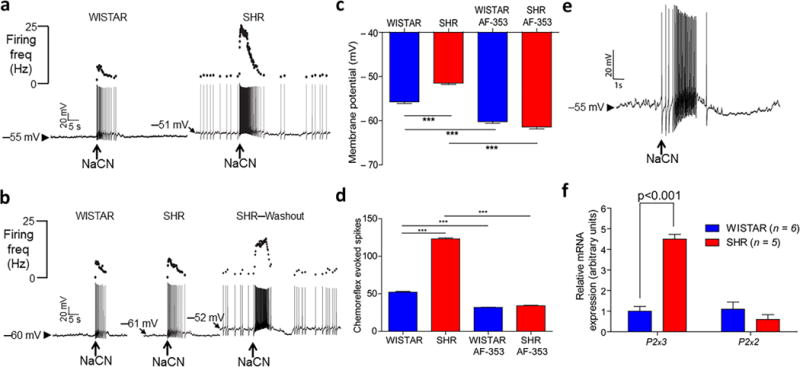Figure 2.

P2X3 receptor mediated hyperreflexia and tonicity of chemoreceptive petrosal neurones in spontaneously hypertensive (SH) rats are associated with upregulation of P2x3 receptor mRNA. (a), two representative whole cell patch clamp recordings from chemoreceptive petrosal neurones from a Wistar (left) and SH rat (right) recorded in the in situ preparation. Ongoing discharge, membrane potential and reflex evoked responses to carotid body stimulation (NaCN, sodium cyanide, 22.5 μg i.a. arrowed) were compared between rat strains. (b), responses of neurones in (a) following P2X3 receptor blockade with AF-353 (20 μM, 20 nl), which was delivered focally into the carotid body by picoinjection. Effects in SH rats were reversed upon washout. Grouped mean data summarising rat strain related differences and responses in membrane potential (c; see also Supplementary Fig. 1a,b) and chemoreflex evoked firing responses (d) before and after P2X3 receptor antagonism. Data in (c) are mean ± s.d. and those in (d) are mean ± s.e.m. One-way ANOVA Bonferroni post-test (n = 12 SH, n = 10 Wistar rats). The difference in expression of P2x3 and P2x2 receptor mRNA from petrosal chemoreceptive neurones (identified using sodium cyanide, NaCN, 22.5 μg, i.a.) during whole cell patch (e) was revealed using single cell PCR ((f); n = 5 or 6). Two-way ANOVA Bonferroni post-test. Data in (f) are mean ± s.e.m and were generated from the in situ arterially perfused preparation. *** P < 0.001.
